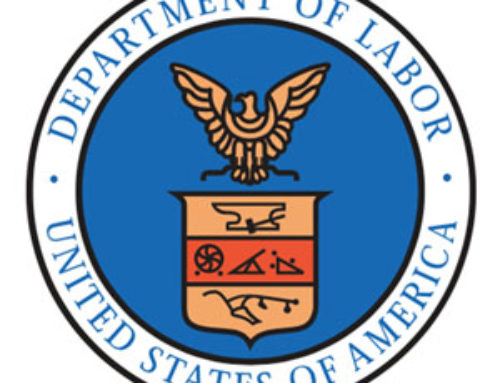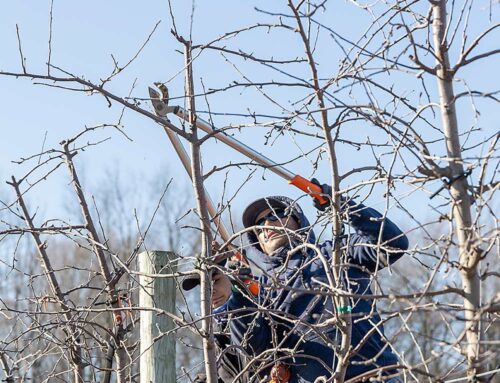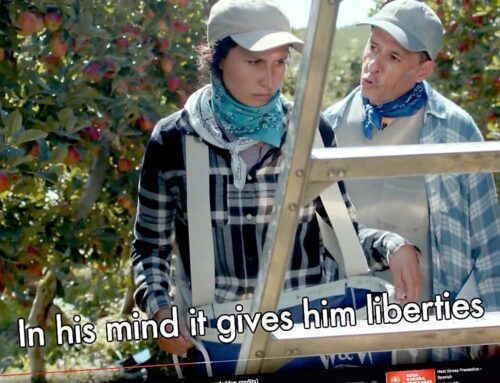Every grower digs in the soil, so the chance of hitting a buried utility line can be all too real. Hit lines can injure workers, cost production time while utility companies evaluate and repair the damage and potentially result in repair costs that the grower must reimburse.
The biggest risk to a farmer: losing the farm, according to Whitney Price of the Pipeline Ag Safety Alliance (PASA). “If a farmer hits a liquids line, that farm will be out of production for years, and the land may not be restored for a long time.”
Growers use a wide range of heavy equipment, including backhoes, bulldozers and mowers, and all have the potential to damage buried pipelines or utilities, according to Gene McAvoy, vice president of the National Association of County Agricultural Agents.
“The problem is often compounded in tree fruits by the fact that these are long-term crops — a grove or orchard can be in place for many years, in some cases 50 or more,” he said. “Given such long time frames, soil can erode, exposing once-buried lines, and people can forget about lines or the exact location of lines buried beneath the grove.” In addition, orchard ownership may change, so next-generation growers or new growers may have no knowledge about locations of buried utilities.
Since orchard activities often include annual tree replacements, which involves “digging a substantial hole that may be deep enough to damage a utility or pipeline,” as well as entire block replacement that requires major movement of earth, McAvoy emphasizes that tree-fruit growers need to be especially cognizant of underground utilities.

This infographic from Enbridge encourages farmers to call 811 before digging. Additional infographics and information are availabe at pipelineagsafetyalliance.com
Courtesy of Enbridge, PASA Member
Be safe, not sorry
Fortunately, growers can check utility-line location quite easily, Price said. The first step is to call 811. Known by different names across the United States, such as MISS DIG 811 in Michigan and Gopher State One Call in Minnesota, the 811 number works the same throughout the country.
“It connects you to a call center in your state that will notify the appropriate public utility companies in your area, and the companies will then send folks to your land to mark the approximate location of the buried utilities with flags or paint,” Price said. States typically require growers to call two to three business days before digging. (Information about each state’s 811 system is listed at http://call811.com)
The free 811 system covers public utilities, such as water and sewer, natural gas, telecommunications and electric lines, she noted, but it does not cover private utility lines, such as those used for sprinklers, irrigation or propane. For private utilities, a grower should call a local private utility locator, Price said. “There is a fee associated with private-utility locators, but it’s an important service that can help you avoid hitting a service line.”
Before the utility field representatives arrive, she recommends that growers mark the proposed excavation sites with white paint or flags so the representatives can focus on those areas. If a grower’s dig site is close to petroleum or gas transmission pipelines, a utility company representative will be present during excavation to keep everyone safe.
Other tips
Growers should inform all of their staff about safe digging practices and to call 811 before digging. “This is important information for every worker, not just the manager,” Price said.
If a line is inadvertently hit, growers should follow appropriate emergency-response procedures and report the hit immediately — that includes even tiny nicks and scratches that don’t appear consequential. “Even if the grower doesn’t notice a problem, that nick or scratch will lead to a leak or pipeline rupture in the future. For that reason, anytime a line is exposed, you have to report it to the facility operator, who will then come out, inspect, and repair any damage,” Price said. If damage has occurred, the utility company will conduct an investigation to determine if the grower was negligent and is possibly responsible for repair costs.
The best way to avoid those costs is to call 811 and be informed about the private utility lines that may be around the dig site, leading the grower to call a private facility locater. “It’s just good preplanning and it’s a huge safety precaution. Plus, it’s simple to do, and it can save you money and time, and possibly a life,” she said. “It’s really not worth it to think you know where a line is and then hit it. Just call 811.” •
—by Leslie Mertz





Leave A Comment